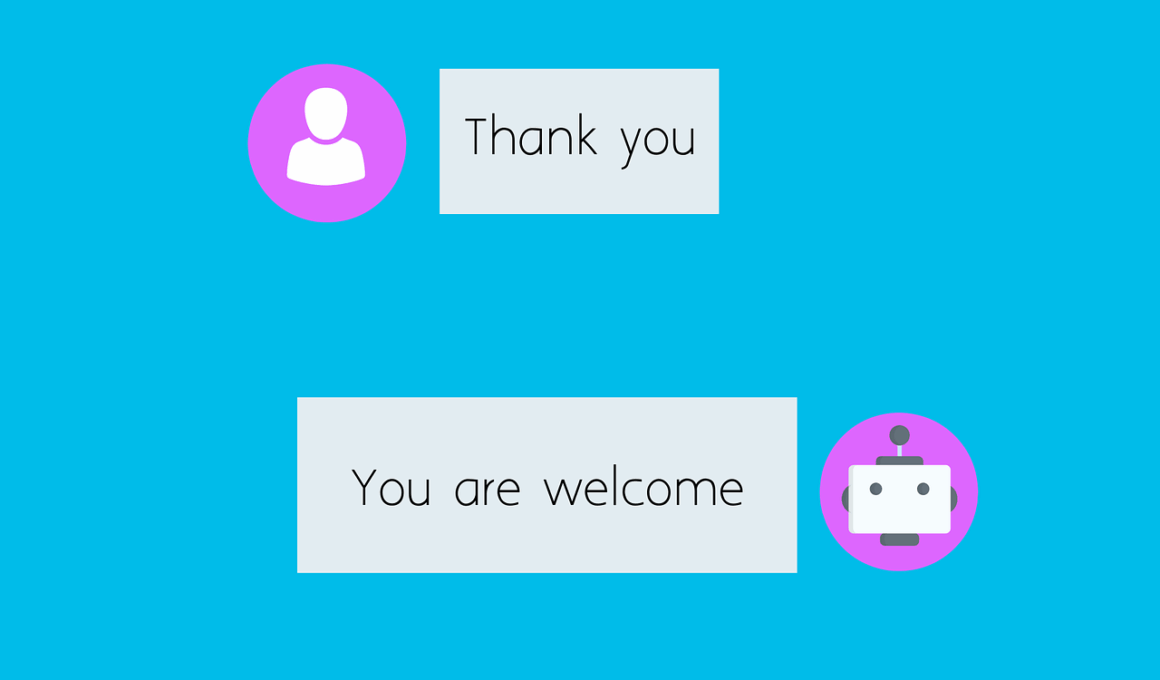Integrating Social Media Customer Service with CRM Systems
The landscape of customer service has changed dramatically in recent years, especially due to the rise of social media platforms. Customers expect prompt responses and effective solutions to their inquiries via channels like Twitter, Facebook, and Instagram. By integrating social media interactions with Customer Relationship Management (CRM) systems, businesses can enhance their customer service capabilities. This integration allows companies to track customer interactions across multiple platforms, ensuring that no questions go unanswered. A seamless connection between social media and CRM systems enables customer service representatives to quickly access past interactions, purchase history, and customer preferences. This information is invaluable for tailoring responses and providing personalized service. Customers appreciate when their issues are addressed promptly, leading to increased satisfaction and loyalty. Investing in technologies that connect social media communications with CRM systems can also lead to improved analytics. Analyzing social media data can reveal trends in customer satisfaction and product feedback, which can inform marketing and product development strategies. To truly succeed in integrating these systems, organizations must invest in training staff to utilize these tools effectively. This ensures a knowledgeable and responsive customer service team well-equipped to handle inquiries through social media.
Moreover, understanding how to utilize the integration between social media and CRM can significantly boost employee efficiency. For instance, when customer service representatives have comprehensive insight into customer histories, they can handle inquiries more deftly. Agents can resolve issues without having to send customers on a wild goose chase or make them repeat their inquiries. This streamlining of communications considerably enhances the customer experience. Additionally, having such insights readily accessible fosters a stronger rapport between customers and service representatives. It creates a sense of personal connection, indicating the company values customer loyalty. Businesses should ensure they have the right tools in place that facilitate not only the integration but also ease of use. Training programs can help employees learn the nuances of these tools, emphasizing not just efficiency but also the importance of empathy in customer interactions. They should focus on providing exemplary service while using the CRM effectively. Customer feedback collected through social media can be linked directly to CRM systems, allowing companies to adapt services or products based on real-time data. This proactive approach can differentiate a company from its competitors, establishing a solid market presence through customer-centric practices.
Best Practices for Implementing Integration
Implementing a successful integration of social media customer service with CRM systems requires careful planning and execution. First, businesses must identify the specific goals they want to achieve through this integration. Setting clear objectives allows for focused strategies that align with overall company objectives. For example, a company may aim to reduce response time to social media inquiries, thus increasing customer satisfaction. This clarity will help direct how resources and technology are allocated. Next, assessing the current technology stack is critical; choosing a CRM system that has strong social media capabilities or APIs is essential for seamless integration. Furthermore, gathering input from customer service teams can provide valuable insights. Involving frontline staff in choosing technologies can ensure the systems adopted cater to their actual needs. Training and ongoing support are vital to ensure that employees fully understand how to use these tools effectively. Regular updates and additional training sessions can provide employees with the latest best practices and features that will help them excel. It’s equally important to devise measurement metrics that track the effectiveness of the integration to make necessary adjustments along the way.
In addition to planning and training, monitoring customer interactions on social media is crucial after integration. Monitoring involves analyzing feedback from customers regarding their experiences with the service provided through social media channels. Through tools available on various social media platforms, businesses can accumulate feedback swiftly. This data is invaluable, as it offers insights into what customers appreciate or dislike about the service. Social media monitoring tools can also provide real-time sentiment analysis, which is essential for evaluating customer perceptions. This information should be categorized and analyzed regularly to identify trends or persistent issues. If multiple customers express similar concerns about a product, service, or interaction, addressing these promptly can prevent larger issues later. The integration of this feedback into CRM systems ensures that intelligence is shared across the organization, driving changes and improvements. Furthermore, engagement with customers via social media platforms can humanize the brand, allowing companies to connect more deeply with customers, growing brand loyalty, and encouraging word-of-mouth advertising.
Future Developments in Customer Service Technology
Looking forward, the future of customer service via social media lies in technology advancements, particularly in AI and machine learning. These technologies offer exceptional potential to further enhance the integration with CRM systems. For instance, AI chatbots can be trained to handle initial customer inquiries, providing quick responses while lightening the load for human agents. This allows human representatives to focus on more complicated issues that require personalized attention. Machine learning algorithms can analyze customer data over time, predicting needs and preferences to create an even more tailored service experience. As these technologies evolve, businesses are likely to see enhanced customer interactions that not only save time but also provide valuable insights. Furthermore, there is growing interest in virtual reality (VR) and augmented reality (AR) applications in customer service. With the integration of AR into customer service, organizations can provide interactive solutions, such as virtual product demonstrations or troubleshooting help. As these technologies become more accessible, companies will need to explore innovative ways to use them in conjunction with their CRM strategies, enhancing customer engagement and service satisfaction.
The importance of feedback loops in customer service via social media cannot be overstated. Integrating social media interactions with a CRM system enables businesses to create an ongoing relationship with customers. Listening to feedback and actively responding demonstrates that the company values customer input, which significantly enhances loyalty. Continuous feedback loops ensure constant improvement by allowing businesses to adapt their strategies based on real-time data. CRM systems track not just customer interactions but also responses to feedback, enabling a deeper understanding of customer needs and preferences. This relationship fosters a sense of community, making customers feel like they are part of a brand rather than just a number. Companies must prioritize and encourage feedback collection from customers on social media, offering incentives or rewards to engage them actively. By valuing what customers say, businesses can align their offerings with the expectations of their target audience. In turn, this allows for innovations based on customer insights, keeping the company relevant in a competitive market while enabling an excellent service experience that leads to success.
Conclusion and Next Steps
In conclusion, integrating social media customer service with CRM systems offers businesses numerous advantages. A well-structured integration strategy not only enhances customer satisfaction but also significantly improves operational efficiencies. As companies endeavor to meet the expectations of today’s mobile and digital consumers, they must embrace these technologies and methods for customer engagement. Developing strong integration practices enables organizations to respond faster, understand customer sentiments, and foster loyalty. Next steps should include a comprehensive evaluation of existing customer service strategies to identify gaps that could be improved through social media integration. Adopting a mindset of continuous improvement and being open to adopting new technologies can pave the way for long-term success. Moreover, engaging employees in this transition is crucial. Their buy-in and active participation will ultimately determine the effectiveness of the strategy. Companies should remain agile, ready to adapt to new social media trends, and technological shifts while maintaining customer-centric approaches. By prioritizing integration, monitoring practices, and continuous evolution, businesses can set themselves apart in a crowded marketplace while providing outstanding customer service.
Customer engagement and effective communication are central to the success of any business operating in the modern marketplace. Therefore, the integration of social media and CRM systems is not just beneficial, but essential. Brands must continually innovate, keeping pace with customer expectations and technological advancements. Companies that excel will be those that create seamless customer experiences borne from effective integration practices. With adequate planning, training, and technology investment, the future of customer service via social media looks promising.


